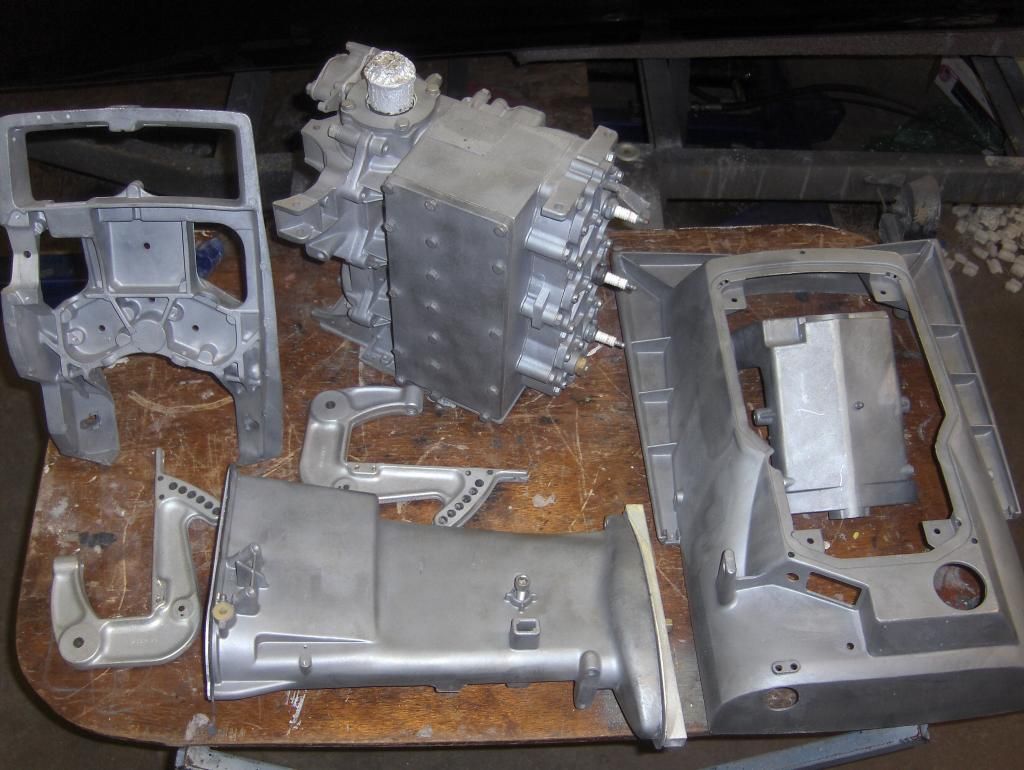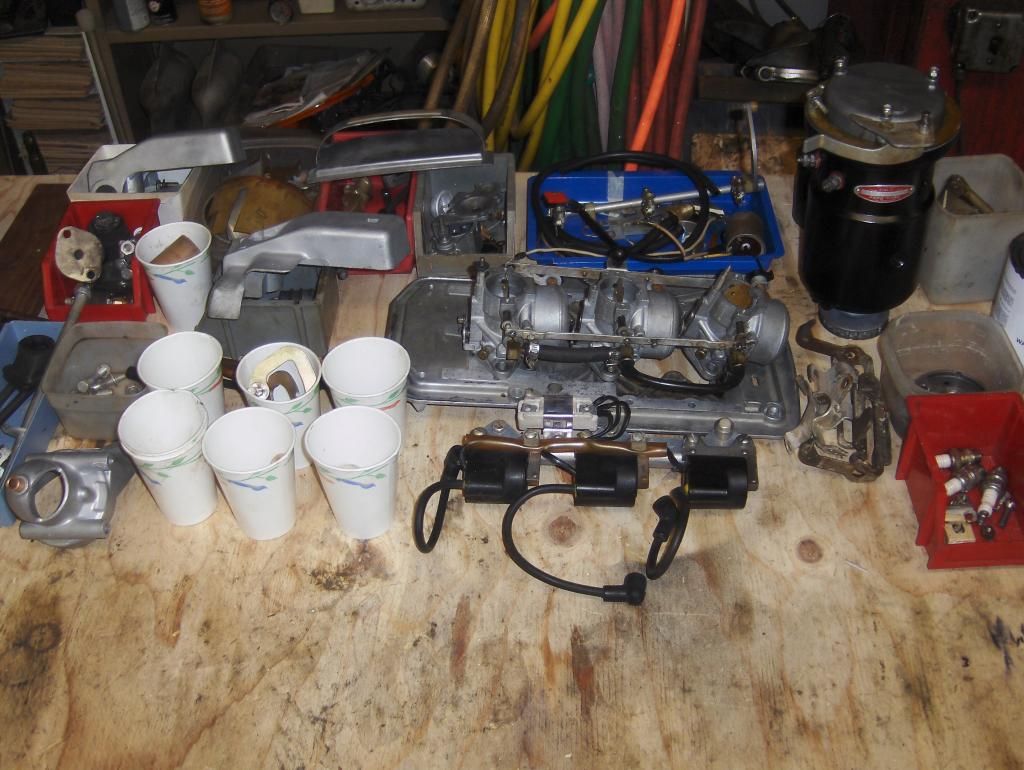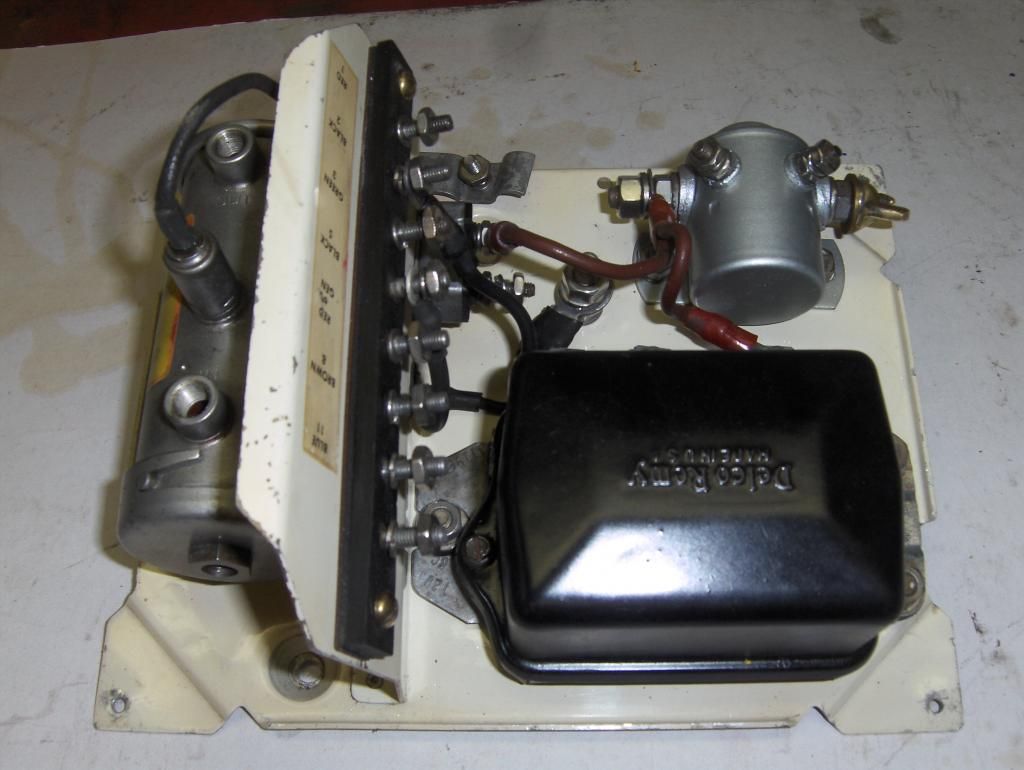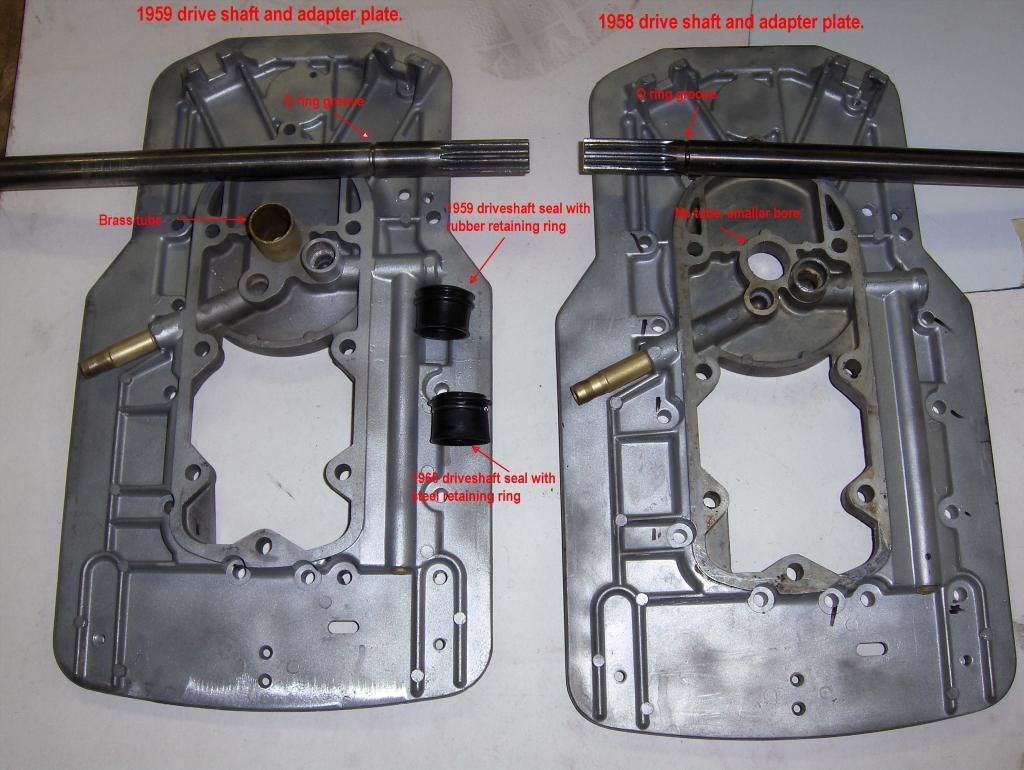latemodel
Cadet
- Joined
- Apr 30, 2006
- Messages
- 21
All of the major components are now ready for blasting with plastic media. The shop I use does a great job. The surface isn?t left rough like sand blasting, or some glass bead blasting.
I am going to blast the power head on this restoration instead of using paint remover. I have sealed everything tightly, but if a little plastic media gets through it shouldn?t hurt anything.
Found another problem. The starter end bushing in both the 1958 and 59 motors was missing. Apparently they have a habit of walking out.
Scott Service bulletin 179 says that the 58 and 59 bushings were pressed in at the factory and they do not sell the bushing separately, but because of dealer pressure they will now sell a 5/16 ID X 7/16 OD X 3/8 inch Oilite bushing to replace the original. The bulletin says to press the bushing in and then stake the outer end at least three times with a center punch to prevent the bushing from walking out. I?ve ordered a couple of bushings online and I will use some green Loc-tite bearing locker to help it hold in.
The bulletin goes on to say that the 1960 and newer starter brackets have a lip on the end and the bushings do not have to be staked, they can?t get by the lip.
If you are having problems with a 60 HP starter engaging the flywheel, check to see if the bushing is still there.
Next, I am going to bead blast all the smaller painted components that are not going to the blaster and start cleaning up the hardware.
Don
I hope I can finally get the pics to post OK.

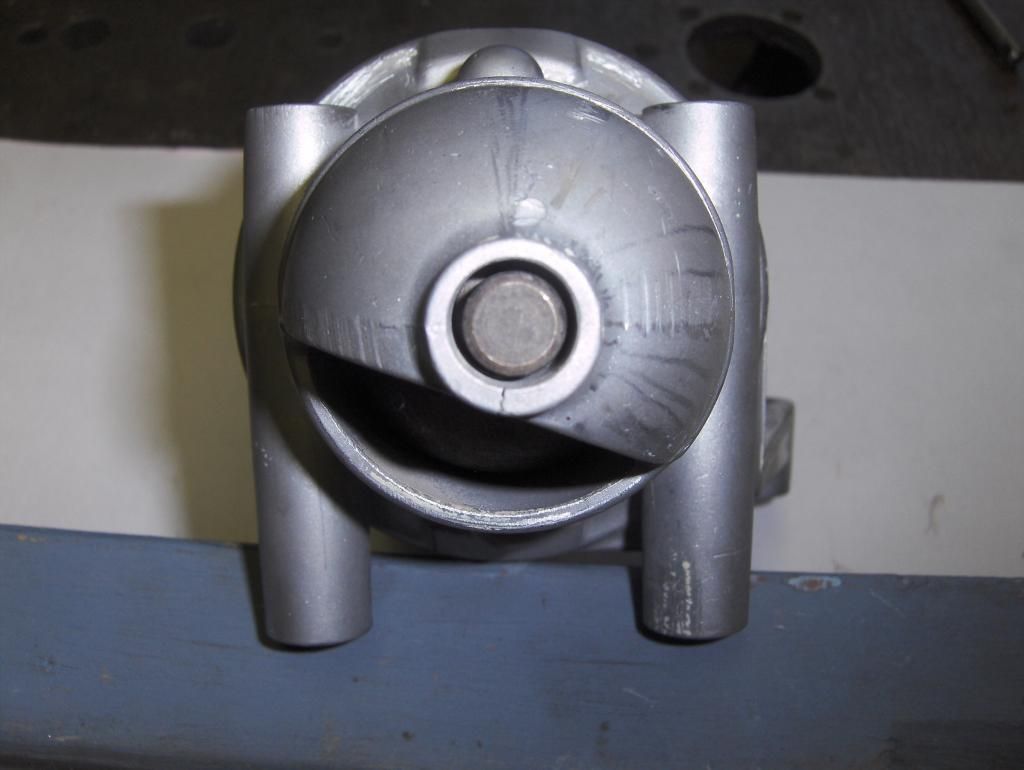
I am going to blast the power head on this restoration instead of using paint remover. I have sealed everything tightly, but if a little plastic media gets through it shouldn?t hurt anything.
Found another problem. The starter end bushing in both the 1958 and 59 motors was missing. Apparently they have a habit of walking out.
Scott Service bulletin 179 says that the 58 and 59 bushings were pressed in at the factory and they do not sell the bushing separately, but because of dealer pressure they will now sell a 5/16 ID X 7/16 OD X 3/8 inch Oilite bushing to replace the original. The bulletin says to press the bushing in and then stake the outer end at least three times with a center punch to prevent the bushing from walking out. I?ve ordered a couple of bushings online and I will use some green Loc-tite bearing locker to help it hold in.
The bulletin goes on to say that the 1960 and newer starter brackets have a lip on the end and the bushings do not have to be staked, they can?t get by the lip.
If you are having problems with a 60 HP starter engaging the flywheel, check to see if the bushing is still there.
Next, I am going to bead blast all the smaller painted components that are not going to the blaster and start cleaning up the hardware.
Don
I hope I can finally get the pics to post OK.






















